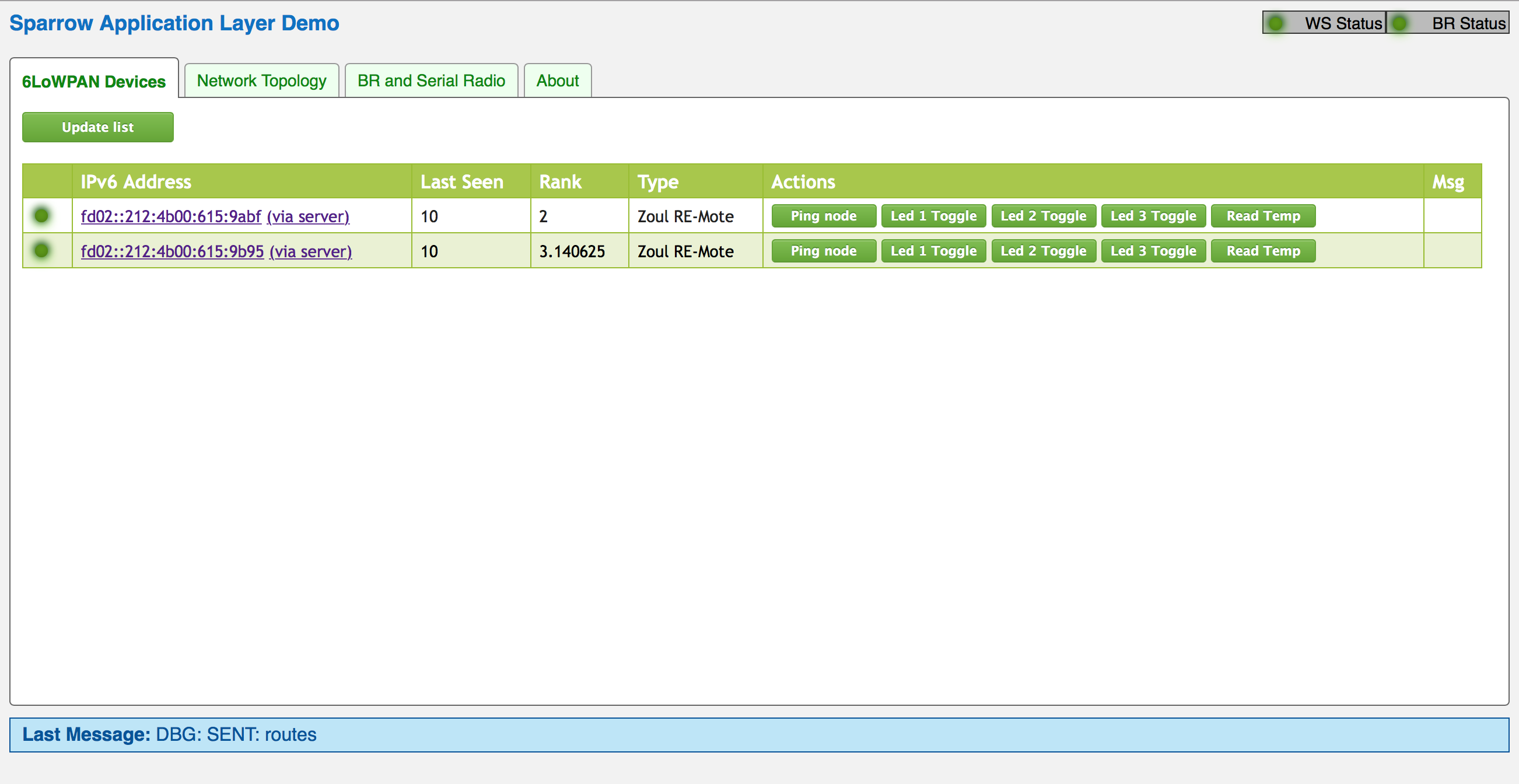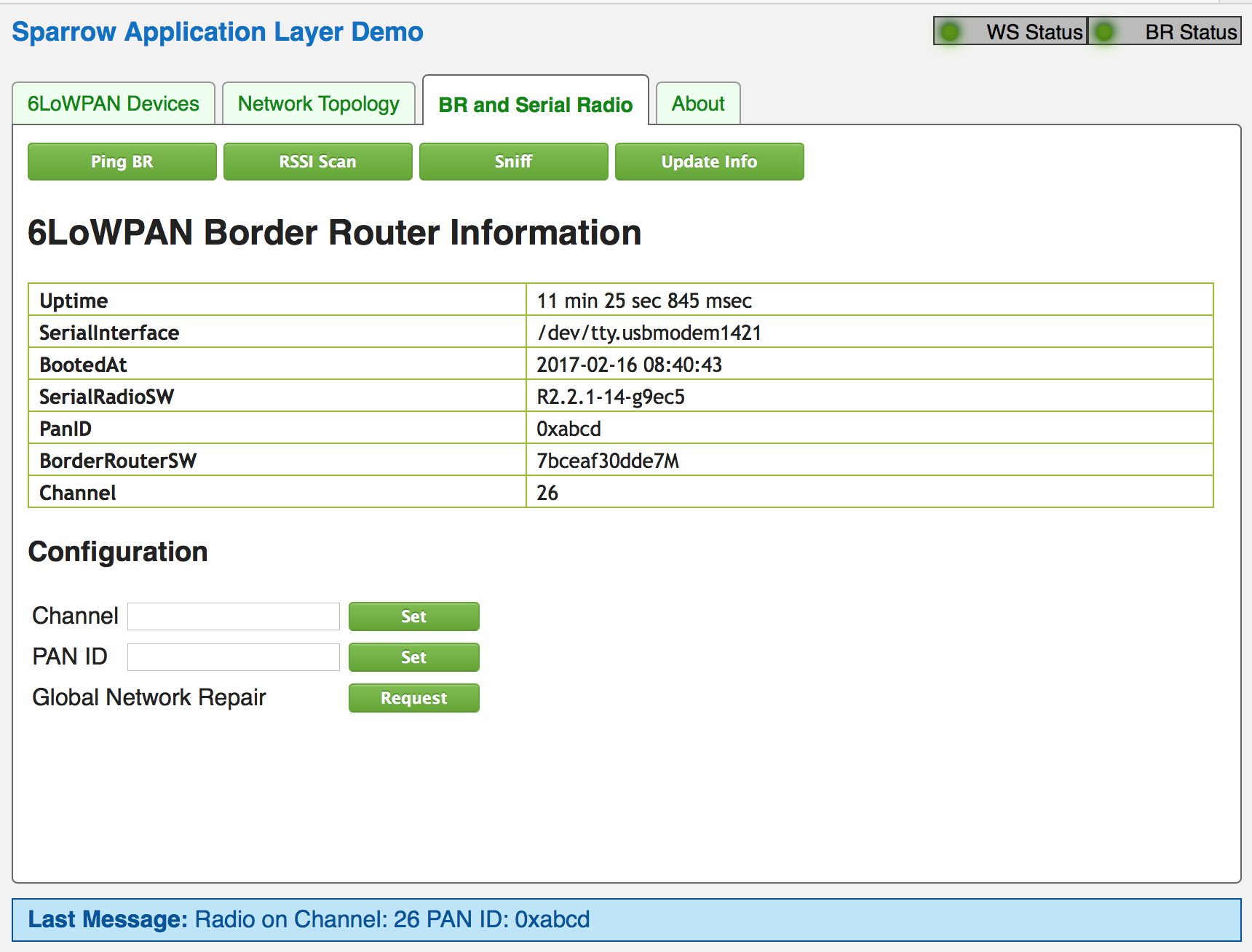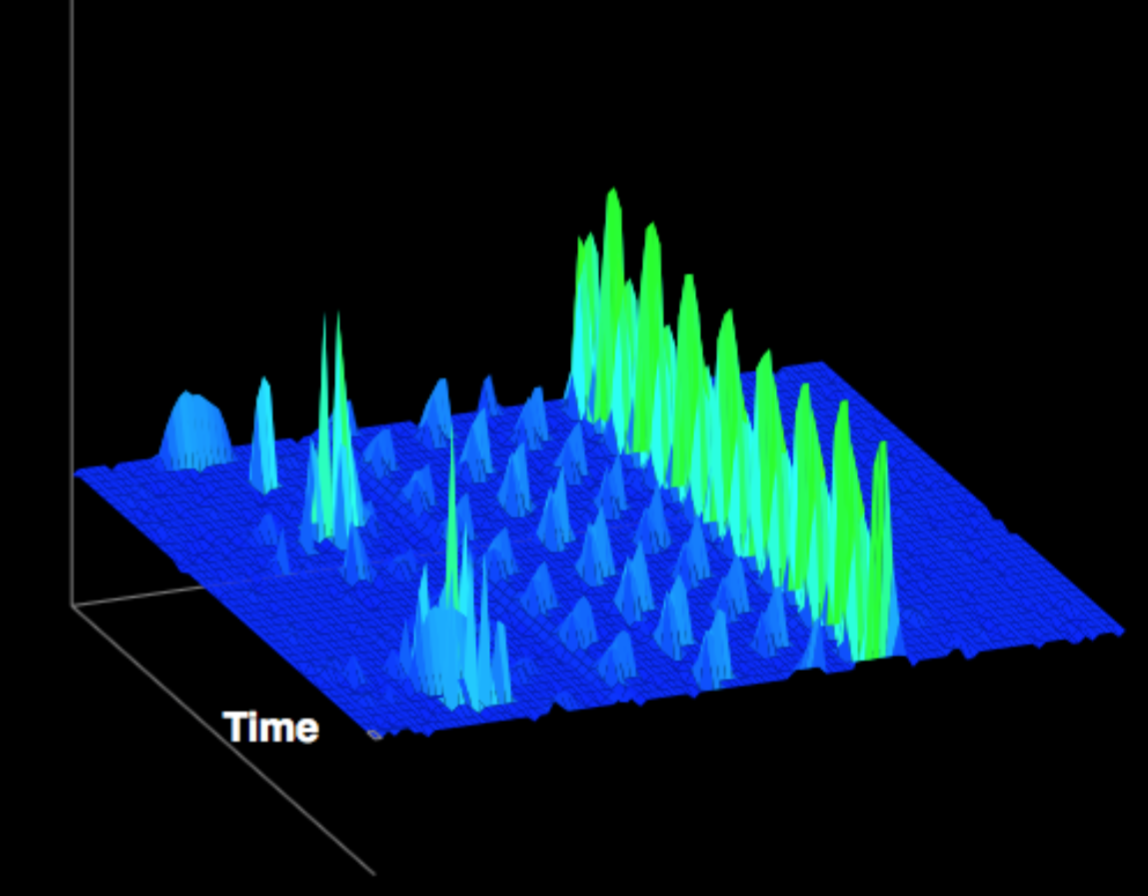-
Notifications
You must be signed in to change notification settings - Fork 15
Sparrow Demo
The sparrow demo is based on a Python based device server that keep track of sparrow devices that have joined the network. It adds a web and web socket server to enable interaction with the user.
Main features of the demo:
- Show joined devices
- Allow configuration of border-router and serial radio
- Able to show sniffer data on any 802.15.4 channel as hex-dump
- Allow RSSI scanning for detecting which channels are best for 6LoWPAN networking (3D RSSI scanner).
First start up a border router (using a serial radio) on your machine. Then move to the examples/sparrow/ directory.
./wsdemoserver.py
Product label: border router
instance: 1 type: 0090da0303010010 Primary firmware
instance: 2 type: 0090da0303010010 Backup firmware
instance: 3 type: 0090da0303010014 802.15.4 radio
instance: 4 type: 0090da0302010015 Routing table
Router address: fd02::212:4b00:60d:b1ea
Network prefix: fd02::
Network address: fd02::1
instance: 5 type: 0090da0303010022 Border Router Management
instance: 6 type: 0090da0303010023 Network Statistics
Setting beacon with length 40 in instance 3
fe02010a020090da0100001b5818020090da03fd020000000000000000000000000001115c000000
Starting demo server
httpd: forward prefix set to "fd02::"
httpd: serving at port 8000
WS Server state initialized.
Device server started at [fd02::1]:4444
...
When the server is started browse to http://localhost:8000 and there should be a web-server with a few pages allowing listing of IoT devices attached to the 6LoWPAN network and some buttons for controlling the devices - when they are sparrow devices. The node listing page looks like the below screenshot:

In this case there are two Zolertia Re-Mote nodes in the network. Other types of nodes will also show up in the list but if they do not support the full discovery protocol there will be less information in the table.
There is also a topology view that will show a topology of the connected nodes. Note that this view is only fully visible if you are running sparrow nodes that provide some basic statistics about the network. So other nodes just running 6LoWPAN / Contiki will not be seen in the topology.
The border router and serial radio page list some information about the serial radio and the current channel, pan ID, etc. You can also from this page set channels, pan ID, security keys, etc.

You can also turn the serial radio into a sniffer to see packets in hex-dump, ping the border router and run a 3D RSSI scanner (see screenshot below). Note: using SR as a sniffer or RSSI scanner will re-configure it in such a way that it will loose traffic from connected nodes during the reconfiguration.

The 3D RSSI scanner will show which channels are used and not.